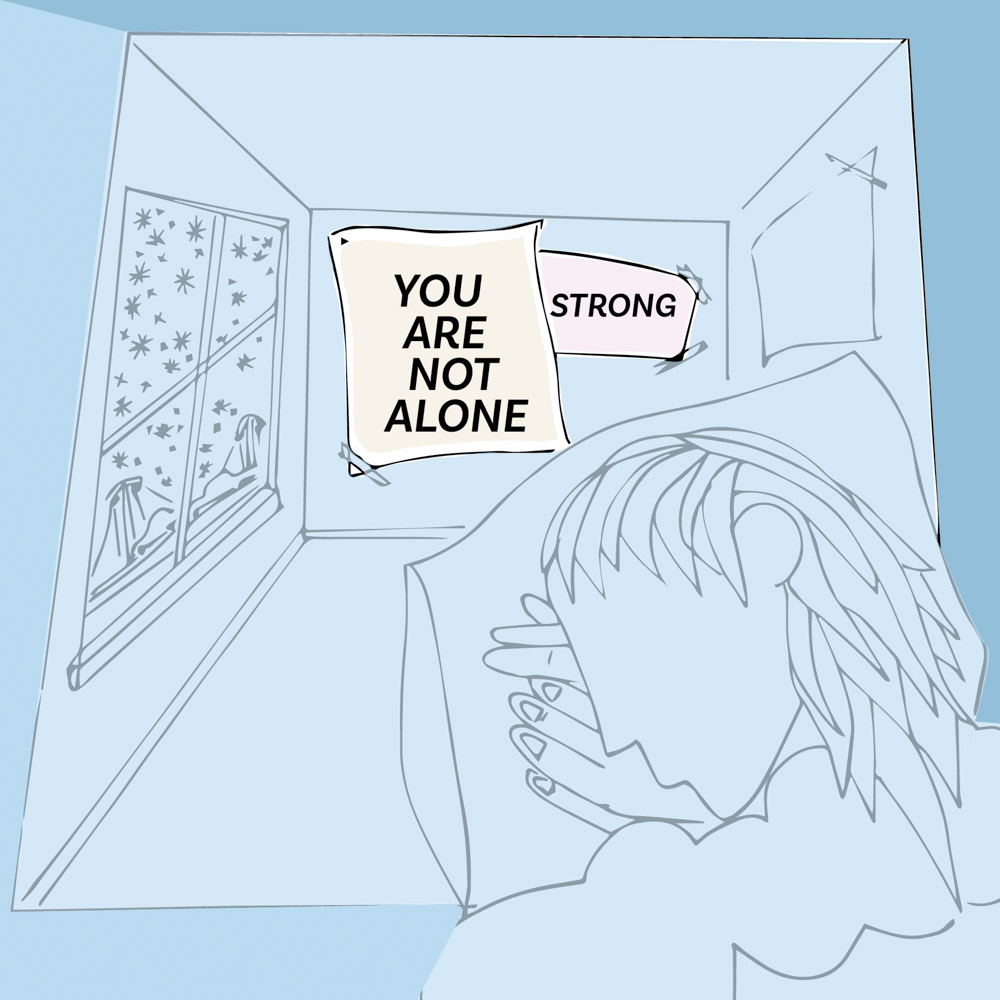Seasonal affective disorder hits campus
Changing of seasons impacts SPU students in winter months
February 12, 2020

It’s that time of year. When students and faculty walk to their classes in the dark and people yearn for long summer days and celebrate when there is a glimpse of sun in the sky. They start to feel lethargic and depressed. These symptoms are common of the winter onset of seasonal affective disorder or SAD.
Seasonal affective disorder is caused by the lack of sunlight in late fall and winter. During this time, people’s serotonin levels drop which can trigger depression. Symptoms of the disorder become less severe in the spring and summer.
Stephanie Armes, a professor of marriage and family therapy in the School of Psychology, Family and Community at Seattle Pacific University, said that it is important for students to recognize the signs and seek treatment.
“Students who think that they may have seasonal affective disorder should not self-diagnose themselves, instead they should seek care. A great place to start is the student counseling center.”
Students who are feeling like they are the only ones suffering from these symptoms should know that they are not alone and that there are resources available on campus to help them.
One of many students who has been impacted by symptoms of seasonal affective disorder, but has not been diagnosed is Jade Hemmings. Hemmings, a freshman interior design major, grew up in Puyallup, Washington.
Despite being in her home state, Hemmings still struggles with symptoms, especially due to the transition from home to college life.
“It’s been hard to be away from my family for such a long period of time,” Hemmings said.
College is not easy. Students leave their families to sit inside and study for nine months, and the winter weather in Seattle can make it difficult for students to keep their spirits up.
“I know the weather is always depressing in Washington, especially in the winter, but it never really affected me to this degree, let alone affecting my grades and work ethic,” Hemmings said.
She began to notice a significant mood change around the second week of winter quarter. It began in the winter months while during other seasons of the year she felt no mood changes.
“Doing everyday things was harder for me than usual. Getting out of bed was not as easy for me and I just wasn’t as motivated in my everyday tasks,” Hemmings said.
She also found she was less productive and motivated to work. It felt mostly due to the weather, but also because of her mood.
She knew about seasonal affective disorder, but never thought she could be impacted by its symptoms.
“Seasonal affective disorder had always kind of been on my radar because my RA sent out an email talking about how it can really affect some students,” Hemmings said.
When Hemmings was creating her schedule for winter quarter her counselor explained that her math, science and writing credits might feel like an unusually heavy workload because students often become less motivated during winter quarter.
Hemmings found this to be true and she plans to pick easier classes or electives that she can look forward to during future winter quarters, instead of just crossing requirements off her list.
“I feel like it’s difficult to complete my work because none of my classes right now are for my specific major, so it makes it harder to have motivation,” Hemmings said.
Hemmings said she has always cared a lot about her grades and this sudden lack of ambition has been difficult to adjust to.
Even though her classes are hard, Hemmings has found fun things to look forward to. She spends time with friends and watches “The Bachelor” on Monday nights.
Although students should not diagnose themselves if they notice a mood change during the autumn and winter months, resident advisors, student ministry coordinators, and staff in the Student Counseling Center.
Hemmings talked with her RA about her mood change and drowsiness and her RA recommended trying a “happy lamp,” otherwise known as light therapy. According to the Mayo Clinic, light therapy uses lamps that emit a light that mimics natural sunlight. Students can check out light therapy lamps by talking to their SMCs.
Hemmings looks forward to sunnier weather, knowing that spring quarter is getting closer. Knowing she is not alone in feeling this way is reassuring and has allowed her to push through winter quarter.
Hemmings said she also looks forward to studying on the grass in Tiffany Loop when spring finally arrives.
“While it is difficult right now, it’s nice knowing that the winter is not forever, it’s only temporary,” Hemmings said.
Although students should not diagnose themselves, if they have any questions or wish to seek counseling, they can visit the SPU Student Counseling Center located on the First floor of Marston Hall.

























































































